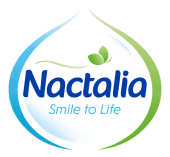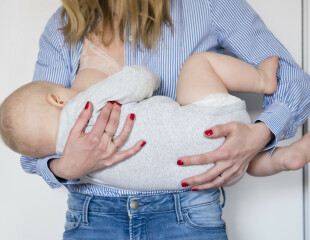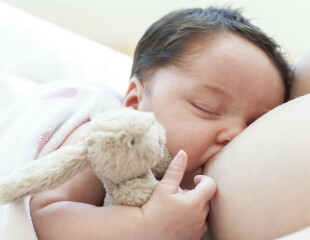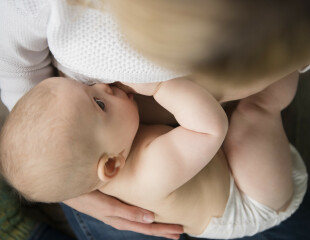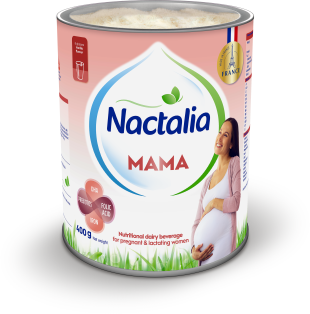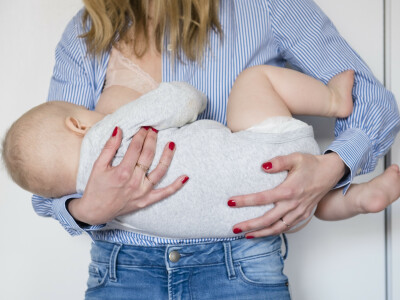
Good habits for successful breastfeeding
How do I breastfeed successfully? Which breastfeeding positions should I use? What rhythm is best?… Breastfeeding is a wonderful way of creating and nurturing a bond with your baby, it promotes their development and is also better for growth and health. To find out everything there is to know about breastfeeding, follow the guide!
1/ I settle down in a calm environment
It is best to sit or lie down in a calm, familiar environment that is quiet and peaceful. Whilst breastfeeding is first and foremost a way of nourishing your baby, it is also an opportunity to share unique moments together with your baby or as a threesome with baby’s dad! Treat these moments as time to rest and relax.
It is also possible to breastfeed away from home of course. You might want to use a scarf or breastfeeding cover to conceal your breast and wear suitable clothing to make it easy to access your breast.
2 / I ensure that I have a good breastfeeding position
It is up to you to choose the position in which you will feed baby. Sitting, sideways or lying down – breastfeeding is possible in many different positions! Choose the position which feels comfortable for both of you, depending on the location, the time of day, how tired you are or simply what feels best!
Note that a correct, comfortable initial position that is free of muscular strain helps ensure that baby takes the breast correctly. Don’t hesitate to seek the advice of a breastfeeding professional to point you in the right direction.
3/ I ensure that baby takes the breast correctly
Whichever position you choose, baby’s ear, shoulder and hip should always be aligned and their mouth should be in alignment with your nipple. Their head is slightly tipped back and their mouth is wide open. Quickly move your baby’s wide open mouth towards your nipple, which will ensure that the nipple is right at the back of their mouth, thereby avoiding any uncomfortable rubbing or biting.
Note that it is up to your baby to move into the breast, and not the breast that goes to baby. To get things going smoothly, you can support the breast from underneath, making sure that your fingers are well away from the nipple area.

EXPERT ADVICE: how can I help my baby open their mouth wide?
Once both of your are in the correct position, gently move your baby in towards your breast whilst rubbing their upper lip with your nipple.
Move baby away and then repeat. Your baby should quickly succumb to temptation and in a state of increasing urgency, will open their mouth wide!
4/ I fit in around baby’s breastfeeding rhythm
There are no strict rules in terms of breastfeeding rhythm. Just make sure you feed your baby at the slightest signs of hunger: eyes moving under their eyelids, sucking action, agitated mood… This is the principle behind “breastfeeding on waking”. Then after a few days your baby will cry to request a feed based on their needs. This is “breastfeeding on demand”. Just remember to ensure that feeds are sufficiently effective. To do this, trust baby’s sucking rhythm. It should be audible, slow and constant.
After a few months, you can progress to “amicable breastfeeding” when you can decide whether or not to breastfeed baby at a specific moment.
EXPERT ADVICE: how can I stimulate lactation?
– By putting baby on the breast very regularly: each time they request a feed, without worrying about what time it is or how long it has been since their last feed.
– By offering baby both breasts when they are no longer swallowing on the first: the more your breasts are stimulated, the more milk they will produce.
5/ I use the right products to take care of my breasts
It is important to take care of your breasts, which can sometimes suffer a bit as a result of all these feeds. Choose a neutral, fragrance-free soap: a perfumed product might mask your natural odour! One shower a day is enough. There is no need to shower before and after each feed.
If you have an irritated nipple, your own milk is the best treatment after having checked baby is taking the breast in the correct position. Apply a little of your milk to your nipple and leave to air-dry. Milk has proven healing properties!
6/ I have the necessary breastfeeding accessories
Breastfeeding is a totally natural way of feeding you baby, so very few products are needed. Some can prove to be useful, however:
- Breastfeeding cushions for comfortable feeding.
- Breastfeeding pads and silicone dressings to avoid staining your clothes. Avoid wearing them for too long as there is a risk that they will dry out your nipple or cause maceration and fungal infections.
- Nipple protectors to help avoid pain, poor positioning and rapid flow of breast milk. Note that the use of nipple protectors should be supervised by a healthcare professional. They can cause a reduction in milk production and make feeding less efficient and should only be used in very specific circumstances
And if there was just one bit of advice to take on board? Have confidence in yourself!
